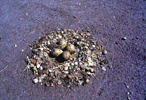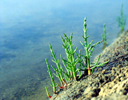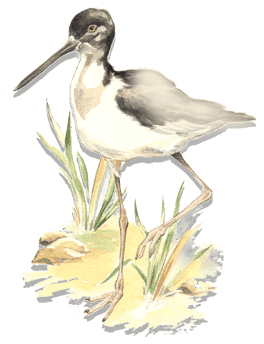|
Coastal
salinas are manmade wetlands. As such they are very important
for nature conservation and biodiversity - as long as they are
well managed.
Salinas
are especially known for their rich bird life. Flamingos, avocets
and many other waders (like the "ALAS bird", the black-winged
stilt) here find both shelter from predators and a good place
for feeding and breeding. In winter, migratory birds - ducks,
geese, waders, birds of prey - from northern Europe stop by or
spend several months in the Mediterranean and Atlantic salinas.
The vegetation
around the salinas is peculiar. The high levels of salinity mean
that the plants must be very tolerant to salt - and also accept
big fluctuations of temperature, water levels and salinity. Thus,
they are extremely specialized. Glasswort, Salicornia, is maybe
the most known of the halophile plants in the salinas, especially
as it is edible.
In order
to be attractive for the birds, salinas require an active ecological
management. This is often fully compatible with the production of
salt. The general aims are to provide the birds with food, protection
and suitable nesting sites. The ecological management is mainly
a question of managing the water levels to prevent the nests from
drowning and the pools from drying out. Most landowners understand
the interest of this aspect on the salinas and the ALAS project
is currently working on the subject with several printed publications
on their way.
Protection
of salinas
The best
protection for the salinas is that they remain economically viable
and that they continue to produce salt. Other types of conservation
measures give additional guarantee for the preservation of these
wetlands and their biodiversity:
- -
the international convention on wetlands: the Ramsar convention,
- -
the European network: Natura 2000,
- -
national legislation (Nature reserve, National park).
Hjalmar
Dahm
Further
reading:
MedWet's
publication "Salinas and nature conservation", by N. Sadoul,
J. Walmsley and B. Charpentier. 1998.
Order through secretariat@tour-du-valat.com
|
 |
|
The
nests of many birds are undisturbed in the small salinas
|
|
|
 |
|
One
of the characteristic plants in the salina, Salicornia europaea
|
|
|
 |
|
Even
a partly abandoned salina can be of interest for the naturalist.
Here in Figueira da Foz.
|
|
|
|


